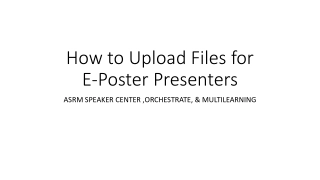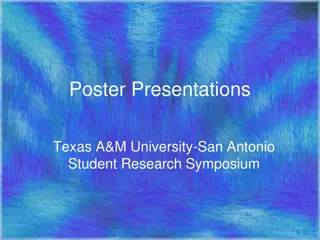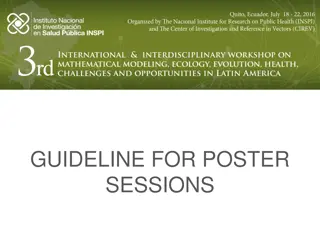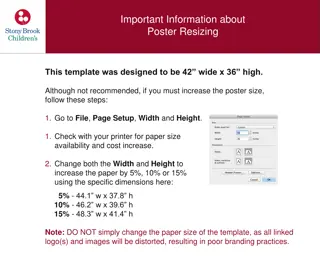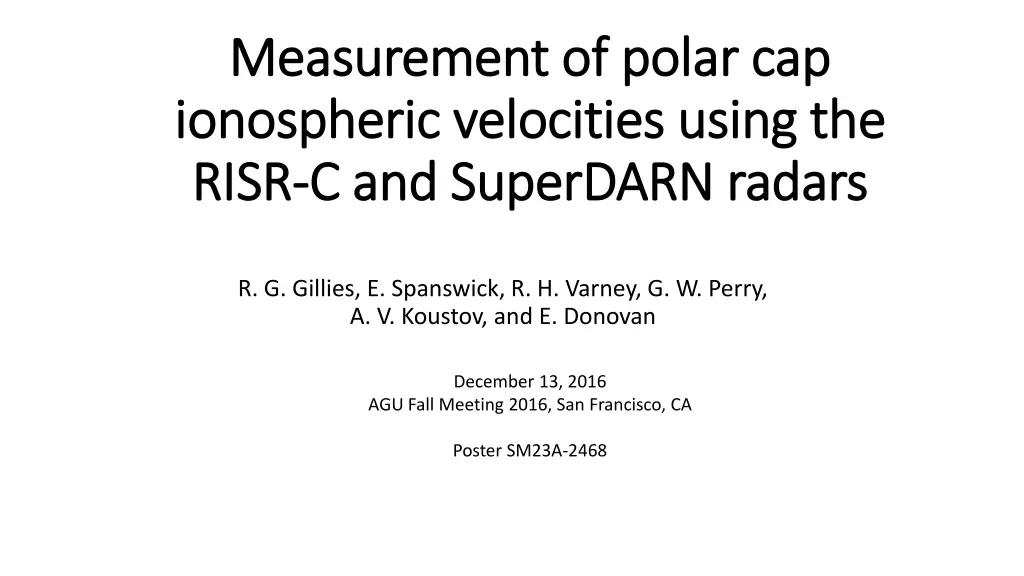
Measurement of Polar Cap Ionospheric Velocities Using RISR and SuperDARN Radars
Explore the measurement of polar cap ionospheric velocities through the combined field of view (FOV) of RISR and SuperDARN radars, allowing large-scale comparisons of velocity measurements over a range of methods in the polar region. The study compares drift velocities estimated by RISR-C, RISR-N, and SuperDARN radars, highlighting the resolution of ionospheric velocities using RISR and the comparisons between SuperDARN and ISR velocity measurements.
Download Presentation

Please find below an Image/Link to download the presentation.
The content on the website is provided AS IS for your information and personal use only. It may not be sold, licensed, or shared on other websites without obtaining consent from the author. If you encounter any issues during the download, it is possible that the publisher has removed the file from their server.
You are allowed to download the files provided on this website for personal or commercial use, subject to the condition that they are used lawfully. All files are the property of their respective owners.
The content on the website is provided AS IS for your information and personal use only. It may not be sold, licensed, or shared on other websites without obtaining consent from the author.
E N D
Presentation Transcript
Measurement of polar cap Measurement of polar cap ionospheric velocities using the ionospheric velocities using the RISR RISR- -C and C and SuperDARN SuperDARN radars radars R. G. Gillies, E. Spanswick, R. H. Varney, G. W. Perry, A. V. Koustov, and E. Donovan December 13, 2016 AGU Fall Meeting 2016, San Francisco, CA Poster SM23A-2468
Introduction Canadian face of Resolute Bay Incoherent Scatter Radar (RISR-C) operating since August 2015 Measurements of polar cap ionosphere by RISR-C complemented by co-located north face of radar (RISR-N) and Super Dual Auroral Radar Network (SuperDARN) HF coherent scatter radars in polar region Polar cap ionospheric drift velocities estimated by these instruments are compared Combined FOVs of RISR radars overlaps the FOV of the Rankin Inlet SuperDARN Rankin Inlet range gates ~10-40 (~600-2000 km) are within RISR FOVs Allows a large scale comparison of SuperDARN and ISR velocity measurements over ~30 SuperDARN range gates which span different HF scatter methods (i.e., -hop E-region, -hop F-region, 1-hop E-region, 1-hop groundscatter, 1 -hop E-region) Both direct Line-of-Sight (LOS) and resolved full-vector velocities from RISR are used and compared to co-incident SuperDARN LOS velocities
Resolving ionospheric velocities using RISR Resulting vector velocities Line-of-sight measurements
SuperDARN/ISR velocity comparisons 2 types of ISR/SuperDARN (Rankin Inlet) comparisons performed: Direct LOS comparisons (assuming negligible vertical drifts) using RISR and SuperDARN beams that are close to (anti-)parallel (within 3 -4 , the SuperDARN beam separation) This resulted in using beams 4, 5, and 6 from Rankin Inlet Comparison between SuperDARN LOS measurements and component of resolved RISR velocities along SuperDARN beam Each SuperDARN LOS velocity was compared to RISR LOS and resolved velocities at the same approximate latitude To keep the data consistent for both comparisons, only measurements which had all three of a SuperDARN LOS velocity, RISR LOS velocity, and RISR resolved velocity were considered Selection criteria for the SuperDARN data included: > 3 dB for echo power, no groundscatter, and at least 4 of surrounding 8 range cells also showed ionospheric scatter Selection criteria for RISR velocities: < 200 m/s velocity error, electron density above 2e9 m^-3, measurement altitude 200-500 km
RI B5 RI B6 RI B4 WD B5 RI Rankin Inlet SuperDARN WD World day WD B3 LOS comparison RISR resolved velocity Gate 30 Component of resolved velocity along SuperDARN beam Resolved vector comparison RISR LOS velocity Gate 20 SuperDARN LOS velocity WD B3 WD B5
SuperDARN vs RISR LOS velocities, Jan.-March, 2016 All range gates (effectively 600-2000 km) Range gates up to 20 (~600-1100 km)
SuperDARN vs RISR LOS velocities, Jan.-March, 2016 Range gates 21 to 30 (~1100-1500 km) Range gates 31 to 40 (~1500-2000 km)
SuperDARN range dependence on median ratio -From ranges ~1000 1700 km (gates 19-34) the velocities measured by RISR and SuperDARN are in agreement if the refractive index is considered (the average refractive index at the F-region peak was ~ 0.87, the light blue curve in the figure) -At closer and farther ranges, SuperDARN velocities tend to be lower than RISR velocities even after accounting for the refractive index probably due to E-region and groundscatter contamination -The SuperDARN comparisons suggest that the resolved RISR velocities appear to be lower than the LOS RISR velocities at ranges far from Resolute (red curve) -Seems like RISR resolved velocities tend to systematically underestimate polar cap flows in these regions -Reasonable to assume as estimate is obtained from effectively a large area and smaller scale velocity shears will be averaged out
Comparison between RISR LOS and resolved velocity measurements -Joint RISR-C and RISR-N data from Feb 1-14, 2016 was considered -RISR LOS velocity measurements from every non-vertical beam between 200-500 km were compared to co-incident resolved velocity vectors -Horizontal components of each along the given beam direction were compared -Overall, LOS velocities and resolved velocities showed similar average velocity magnitudes -Next step was to examine correlations and velocity ratios at different locations with the two FOVs of the RISR radars
RISR LOS to Resolved comparison over FOV Correlation (right plot) and median ratio (left plot) between resolved and LOS RISR velocities at different locations within the two FOVs for Feb. 1-14, 2016 In centre of FOVs, the two agree fairly well, while near the edges and, in particular, above the radars, there is significant divergence between velocity estimations
Conclusions Large comparison between co-incident SuperDARN (Rankin Inlet) and RISR velocities from Jan-March 2016 (~35 days total) was performed Fairly good agreement (after accounting for refractive index) in SuperDARN scattering region where -hop F-region scatter is expected (SuperDARN ranges ~1000-1700 km) At closer and farther ranges, the SuperDARN velocities are, on average, significantly lower than RISR velocities This is expected as lower velocity E-region ( -, 1-, and 1 -hop) and zero velocity groundscatter (1-hop) echoes will be present Some differences between the comparisons with SuperDARN when RISR LOS and RISR resolved velocities were used (in particular at farther RISR ranges) A direct comparison between RISR LOS and resolved velocities was performed In the middle of the RISRs FOVs, the resolved velocities tend to agree well with the LOS velocities On the edges of the FOVs, the correlations between resolved and LOS velocities was very low and the resolved velocities tended to be significantly lower than the LOS velocities Some of the systematic disagreements may be due to vertical flows that were not accounted for future work Therefore, when using resolved RISR velocities, it should be realized that they may be underestimating the real ionospheric flow in certain situations (i.e., on the edges of the FOVs and, in particular, above the radars where the horizontal flows are not as well defined)
Future Work Consider comparison between RISR resolved velocities and other two PolarDARN radars (Clyde River and Inuvik) The geometry of these two radars makes direct LOS comparisons difficult Filter results for geophysical parameters, in particular IMF orientation would expect better agreement between LOS and resolved velocities for Bz negative conditions (flows over polar cap will be more consistent/uniform) Consider seasonal dependence (only a few days from winter were considered in this study)
Bz dependence on RISR LOS to resolved comparison Bz negative (< -5 nT) Bz positive (> 5 nT)
Bz dependence on RISR LOS to resolved comparison Bz neg Bz pos ratio ratio correlation correlation

